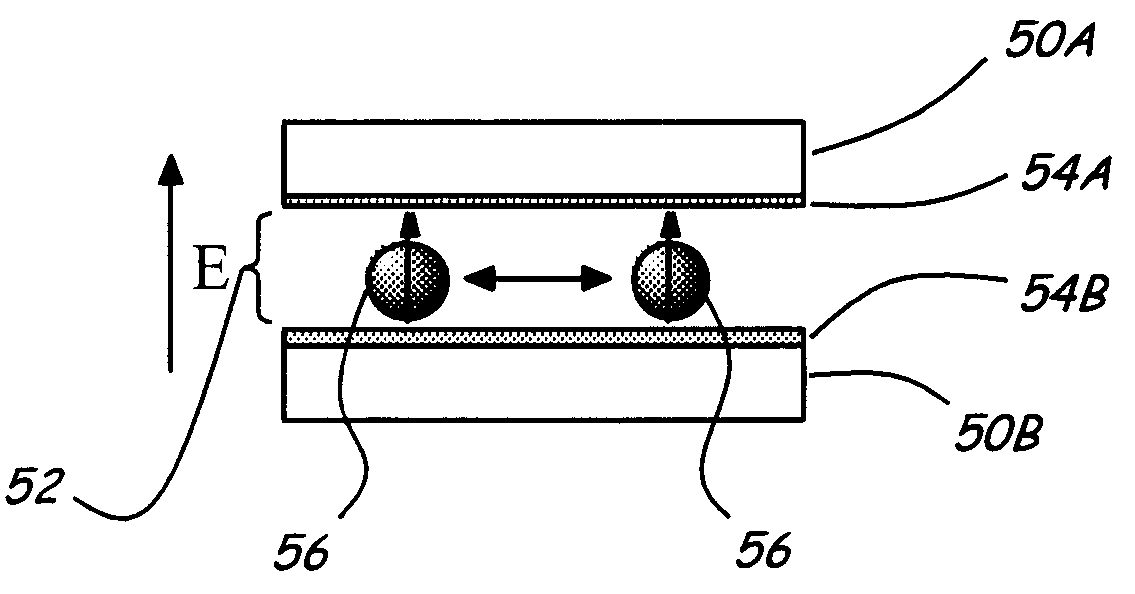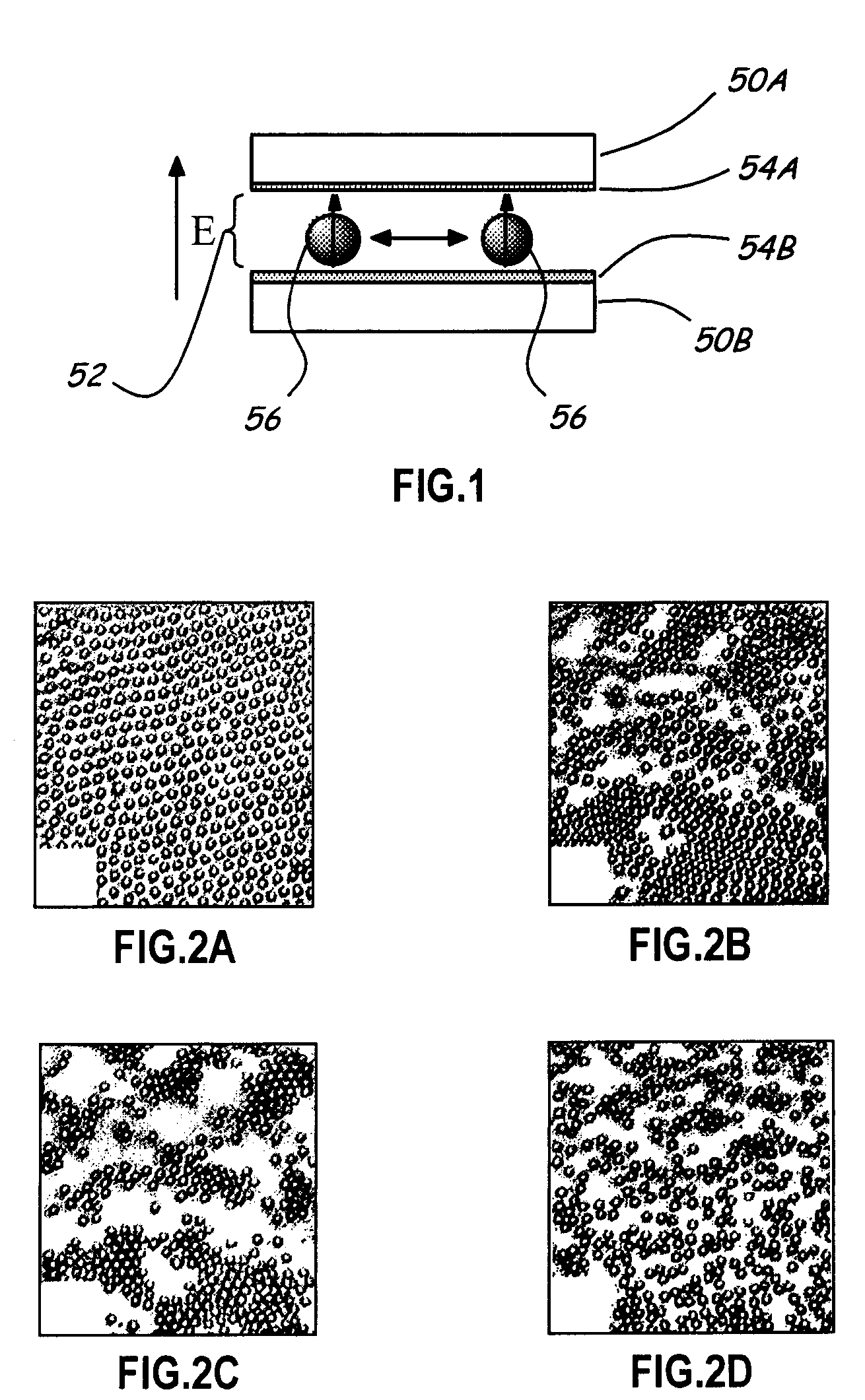Devices Employing Colloidal-Sized Particles
a technology of colloidal particles and devices, applied in the direction of instruments, piston pumps, laboratory glassware, etc., can solve the problems of consuming significantly less space, requiring difficult etching procedures, and limiting the use of colloidal particles in such devices
- Summary
- Abstract
- Description
- Claims
- Application Information
AI Technical Summary
Benefits of technology
Problems solved by technology
Method used
Image
Examples
Embodiment Construction
[0064] Described is the application of colloidal manipulation techniques using fields for the purpose of fluid control on the microscale. Colloidal particles, a generic term describing micron and submicron sized bits of solid matter suspended in a fluid medium, can respond to the application of external fields. Charged colloidal particles will migrate in an electric field due to the electrophoretic body force exerted by the field. Similarly, magnetizable particles can be translated or aligned with magnetic fields. Additionally, a monodisperse suspension of colloidal particles confined between two plates separated by roughly a single particle diameter will repulsively order in the presence of an electric field applied perpendicularly to the confining plane. Furthermore, colloidal particles can be trapped and manipulated individually with focused laser beams; a technique commonly referred to as “optical trapping” or “optical tweezing”. These four methods of colloidal particle manipula...
PUM
 Login to View More
Login to View More Abstract
Description
Claims
Application Information
 Login to View More
Login to View More - R&D
- Intellectual Property
- Life Sciences
- Materials
- Tech Scout
- Unparalleled Data Quality
- Higher Quality Content
- 60% Fewer Hallucinations
Browse by: Latest US Patents, China's latest patents, Technical Efficacy Thesaurus, Application Domain, Technology Topic, Popular Technical Reports.
© 2025 PatSnap. All rights reserved.Legal|Privacy policy|Modern Slavery Act Transparency Statement|Sitemap|About US| Contact US: help@patsnap.com



